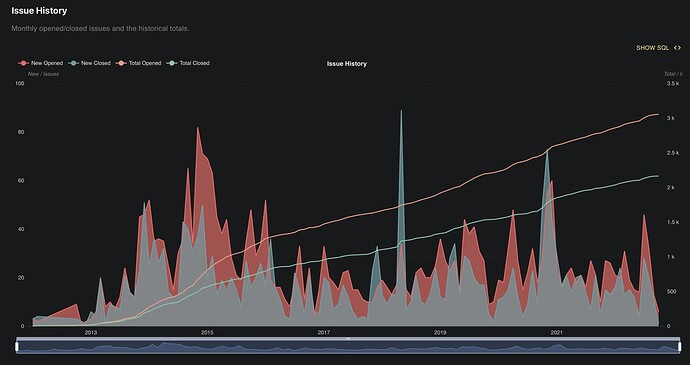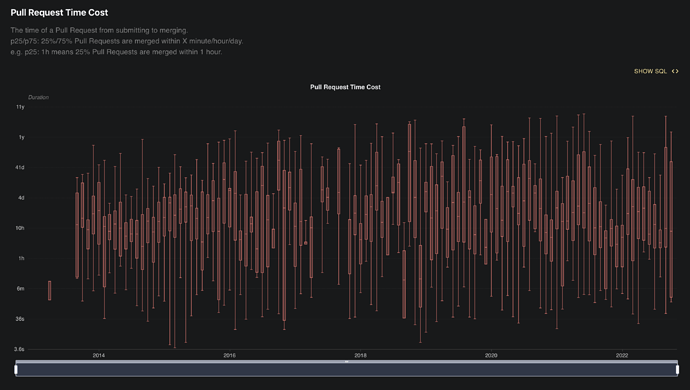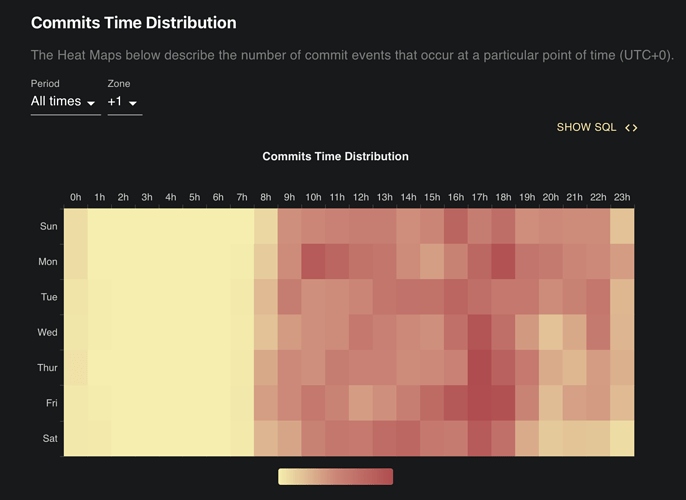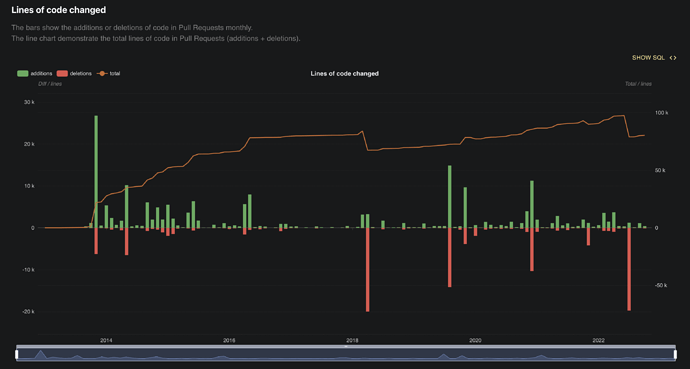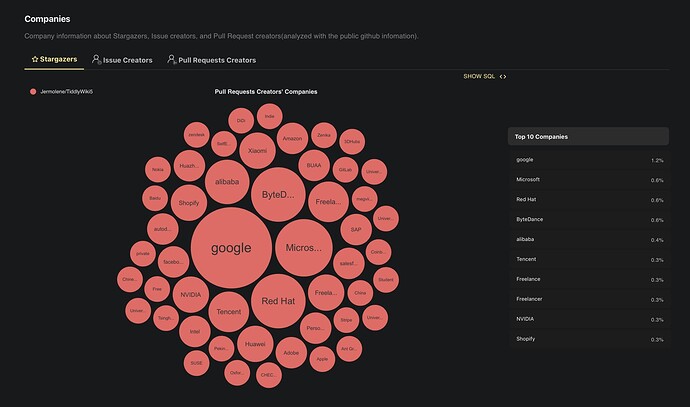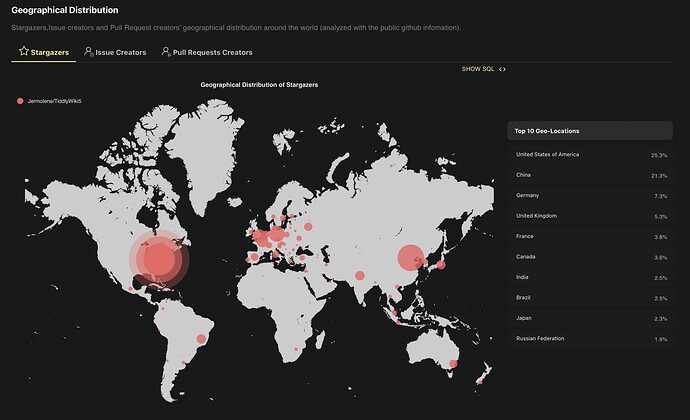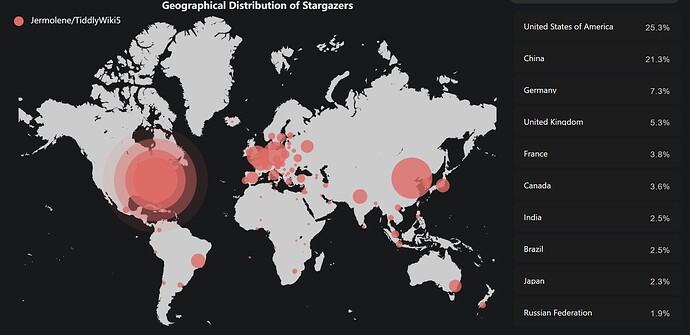I came across this fascinating tool that analyses GitHub repos for open source projects, and generates some very interesting statistics and graphs:
https://ossinsight.io/analyze/Jermolene/TiddlyWiki5
Of course it only covers activity on GitHub, but within that constraint gives a good picture of TiddlyWiki’s development over time. In particular, it helps us to look behind the very visible number of open issues and PRs, and see the actually quite decent progress we make on issues and PRs that are closed/merged.
Here are some interesting snippets but I strongly recommend having a look as many of the charts are interactive.
First, here’s a view of the history of the number of issues opened or closed each month. It shows that we do manage to deal with the majority of incoming issues.
Here’s the time of a Pull Request from submitting to merging. Again, it shows that a decent proportion of PRs are merged within a few hours of submission.
This heatmap of commit times show that Friday afternoon is the most popular time to submit changes to TW5:
This chart of the change in the number of lines of code shows a gentle but fairly consistent growth:
This chart shows the company affiliations claimed by the people giving TiddlyWiki stars. Good to see the big tech companies well represented:
Finally, here’s a chart of the geographical breakdown of the people giving GitHub stars:
